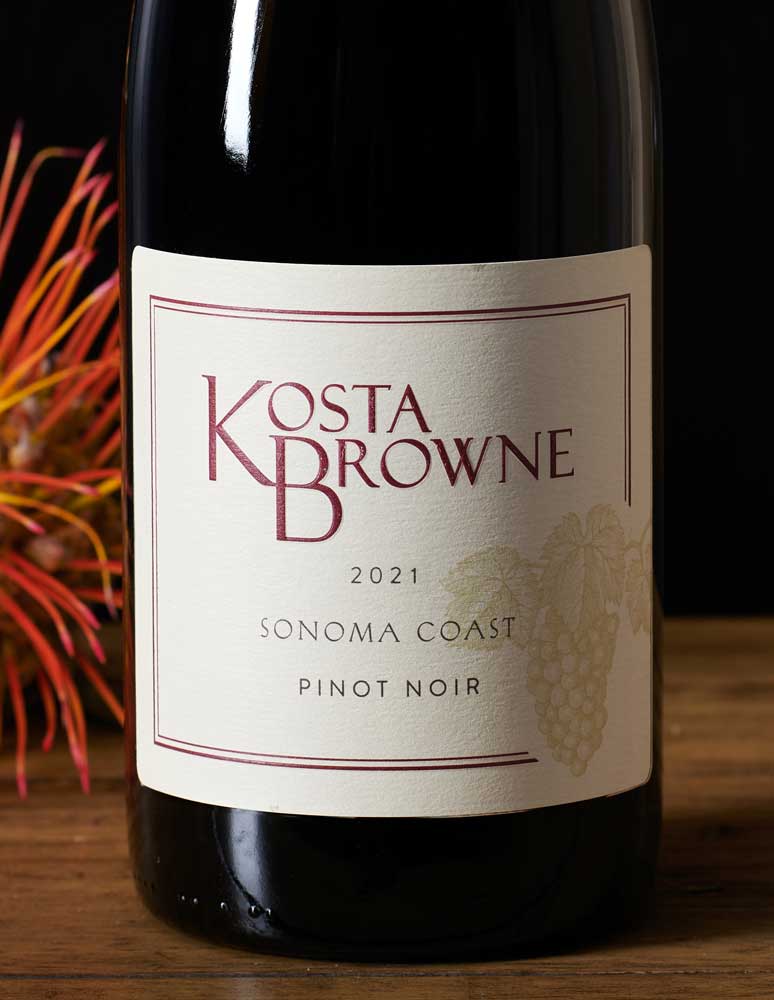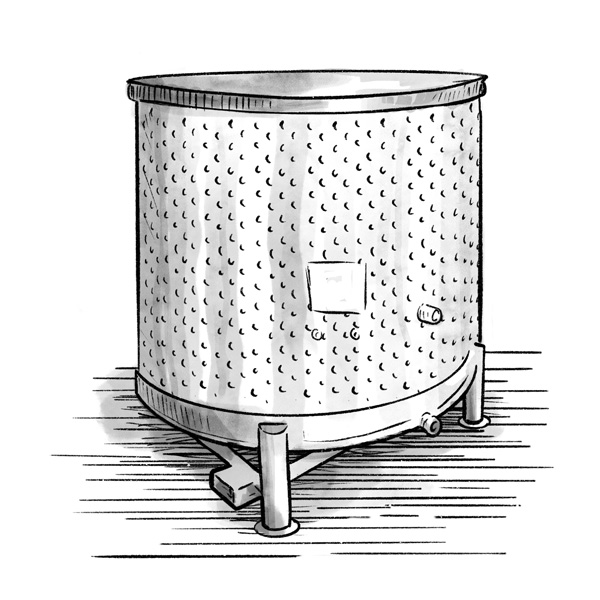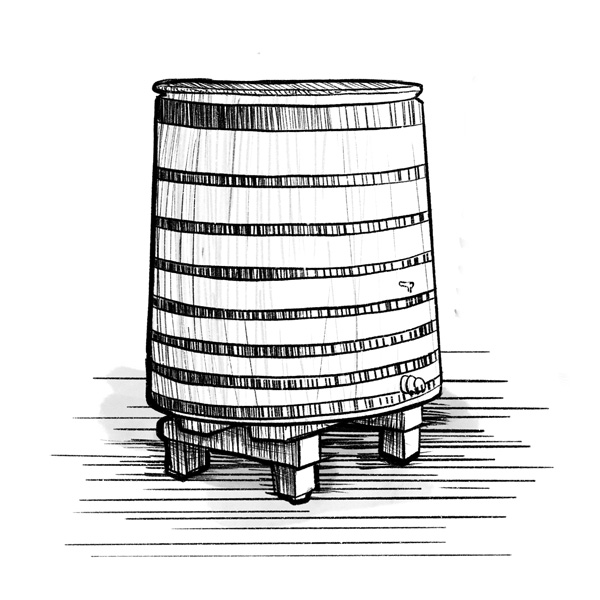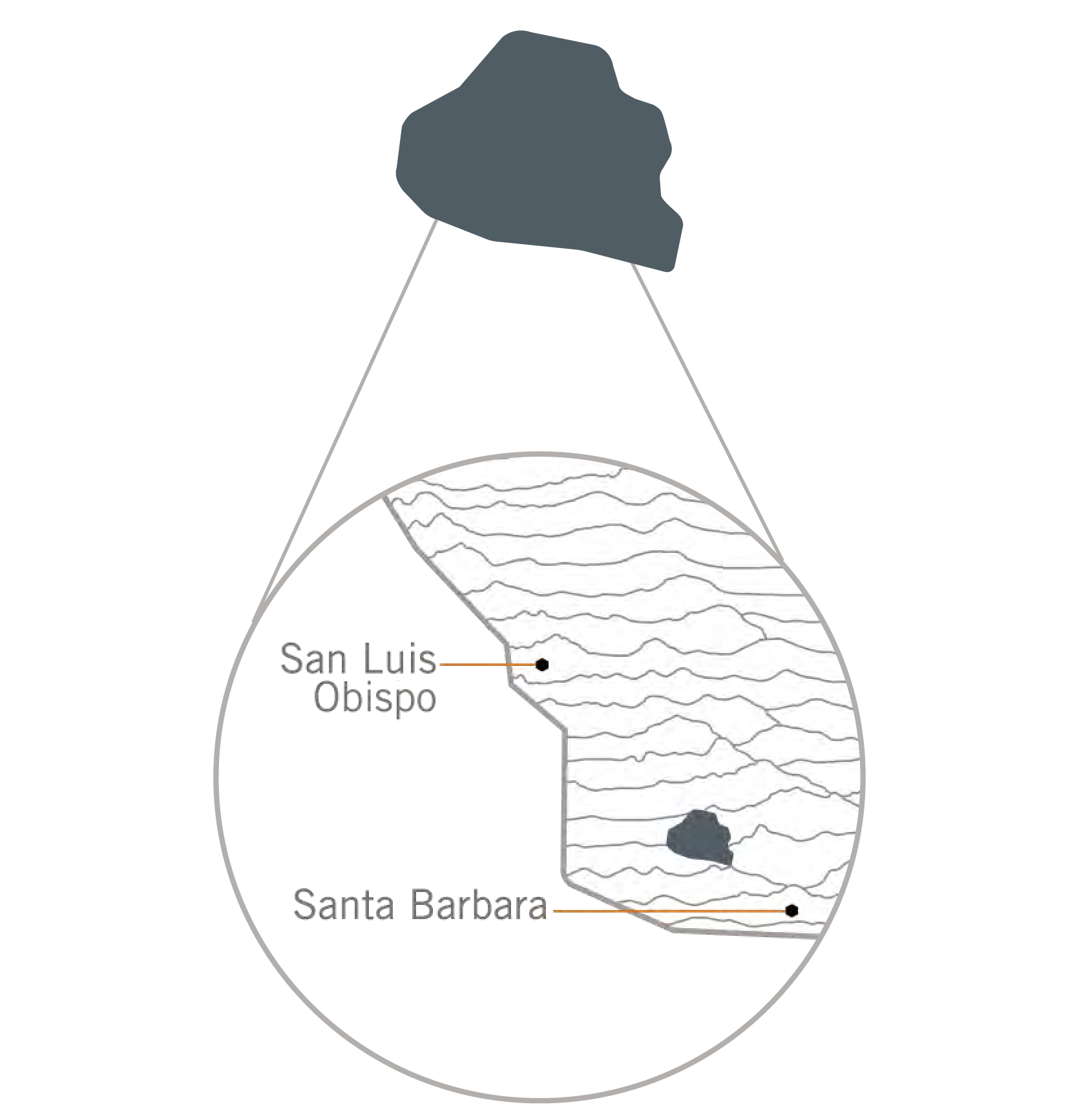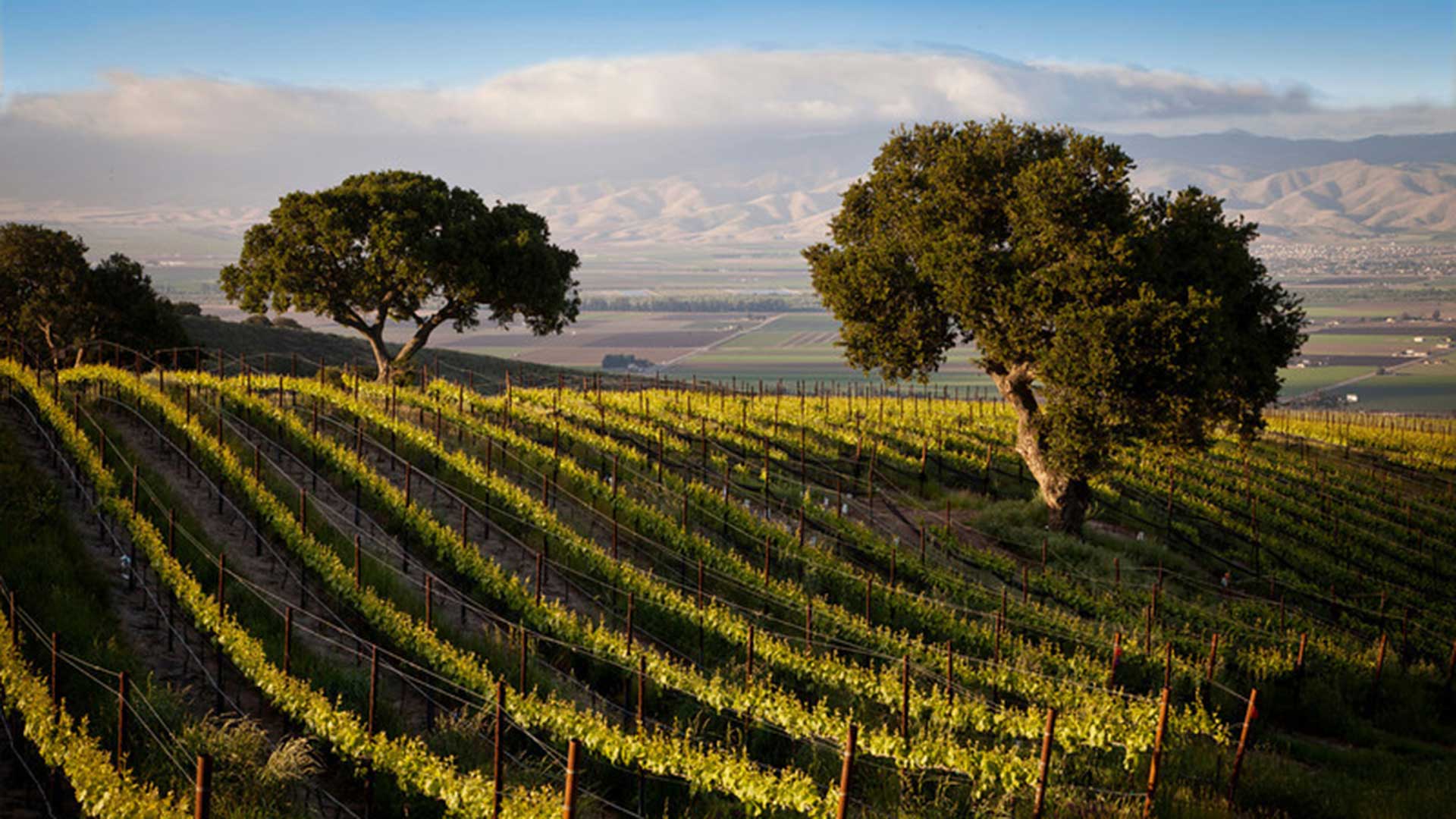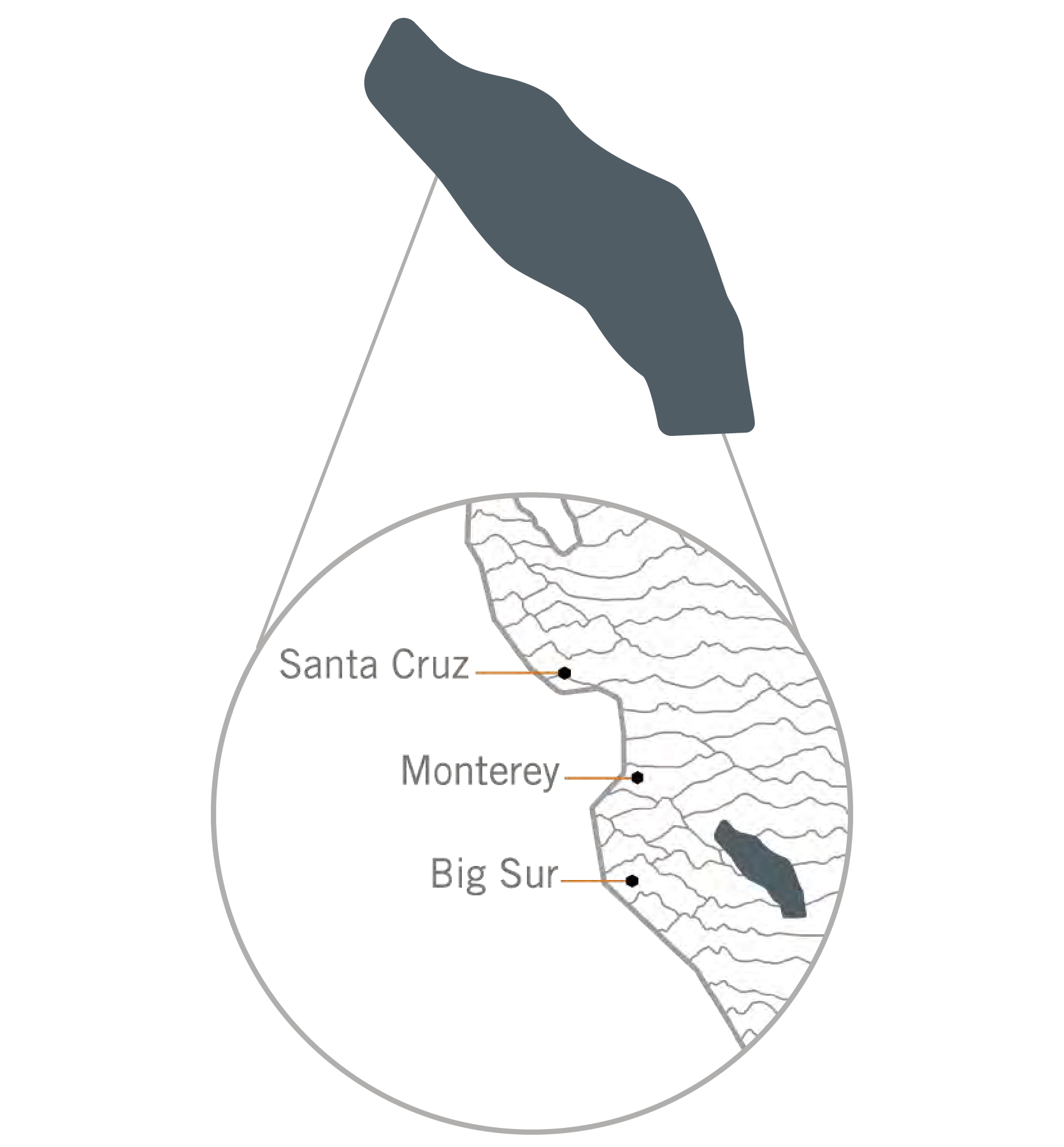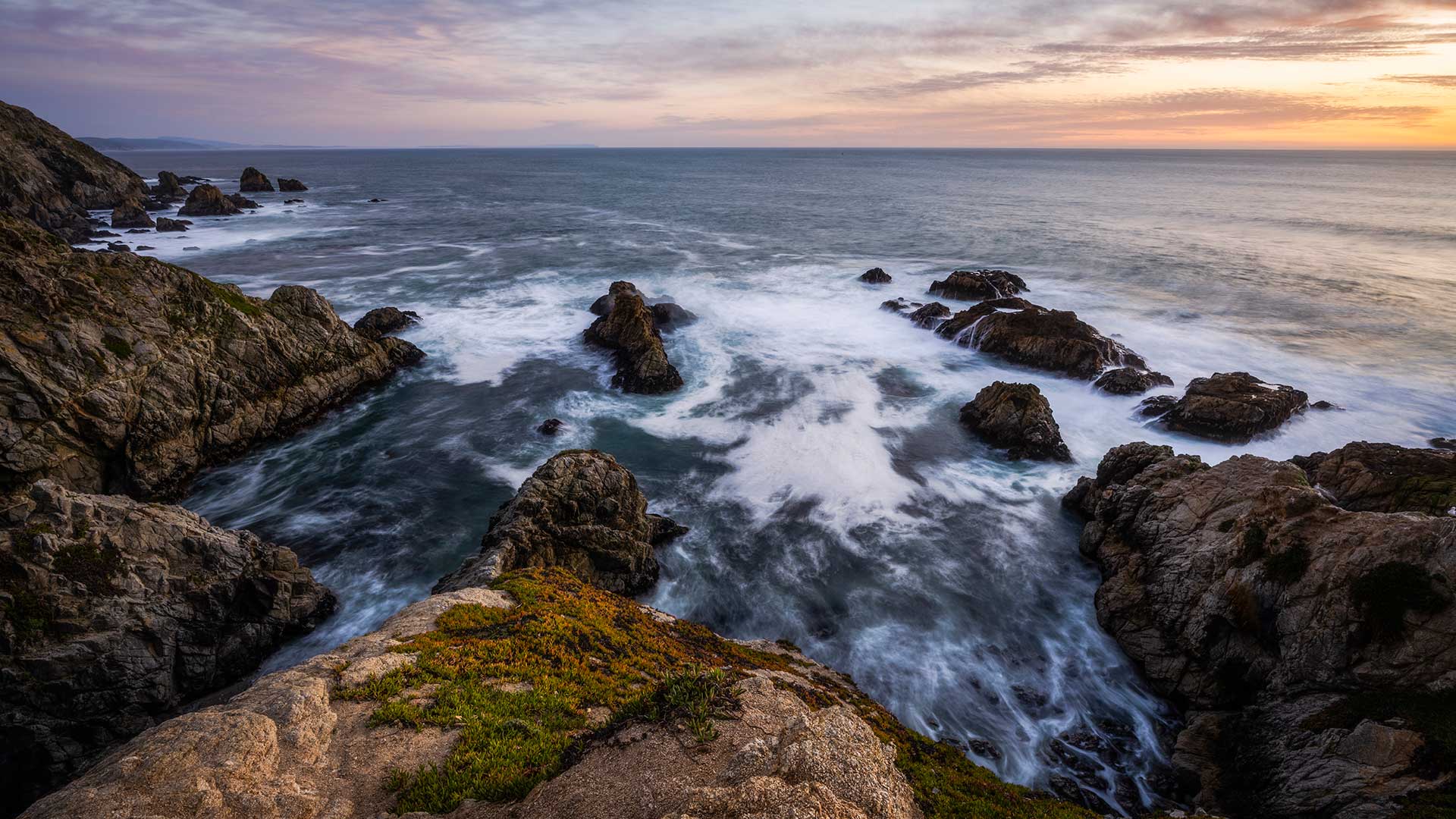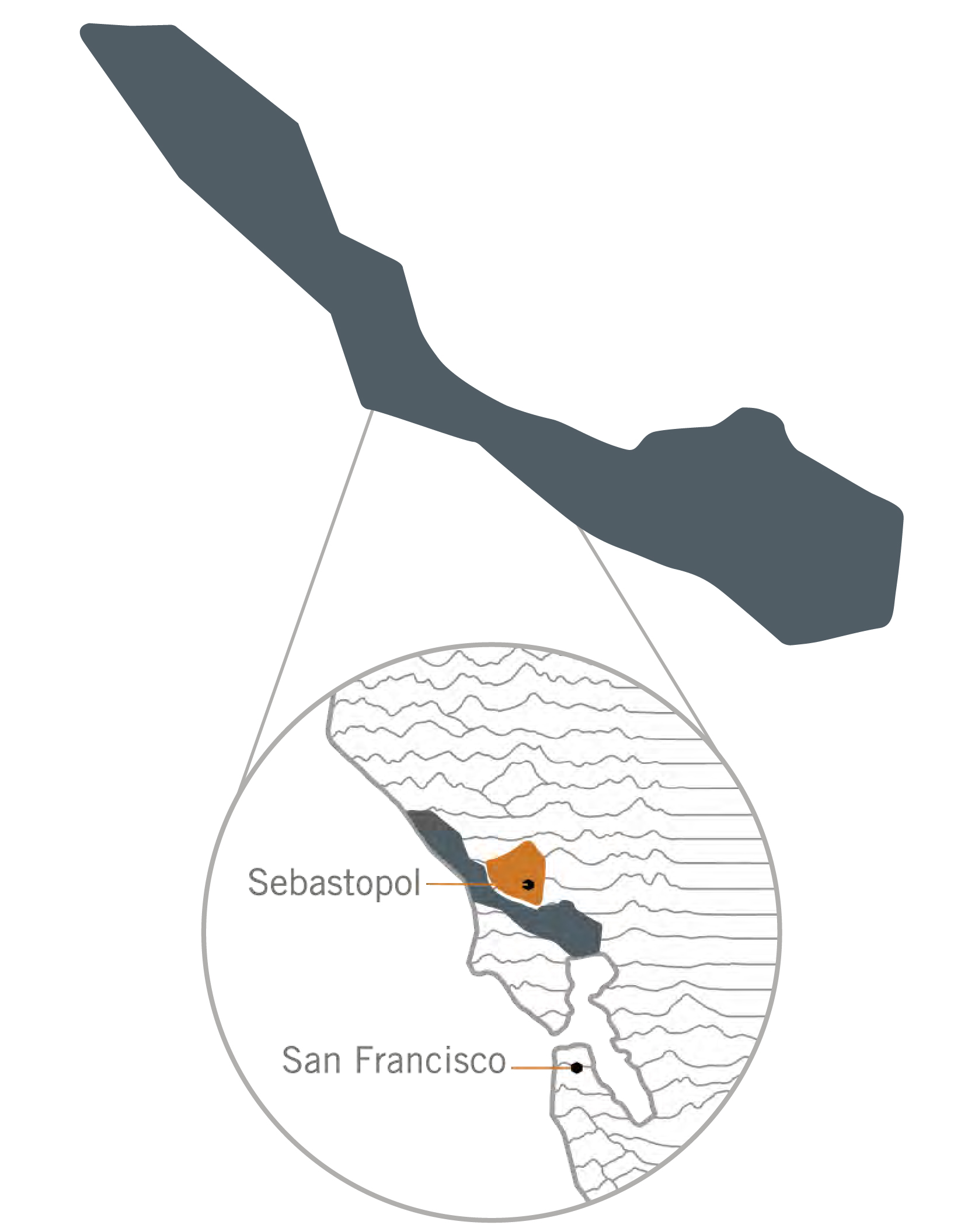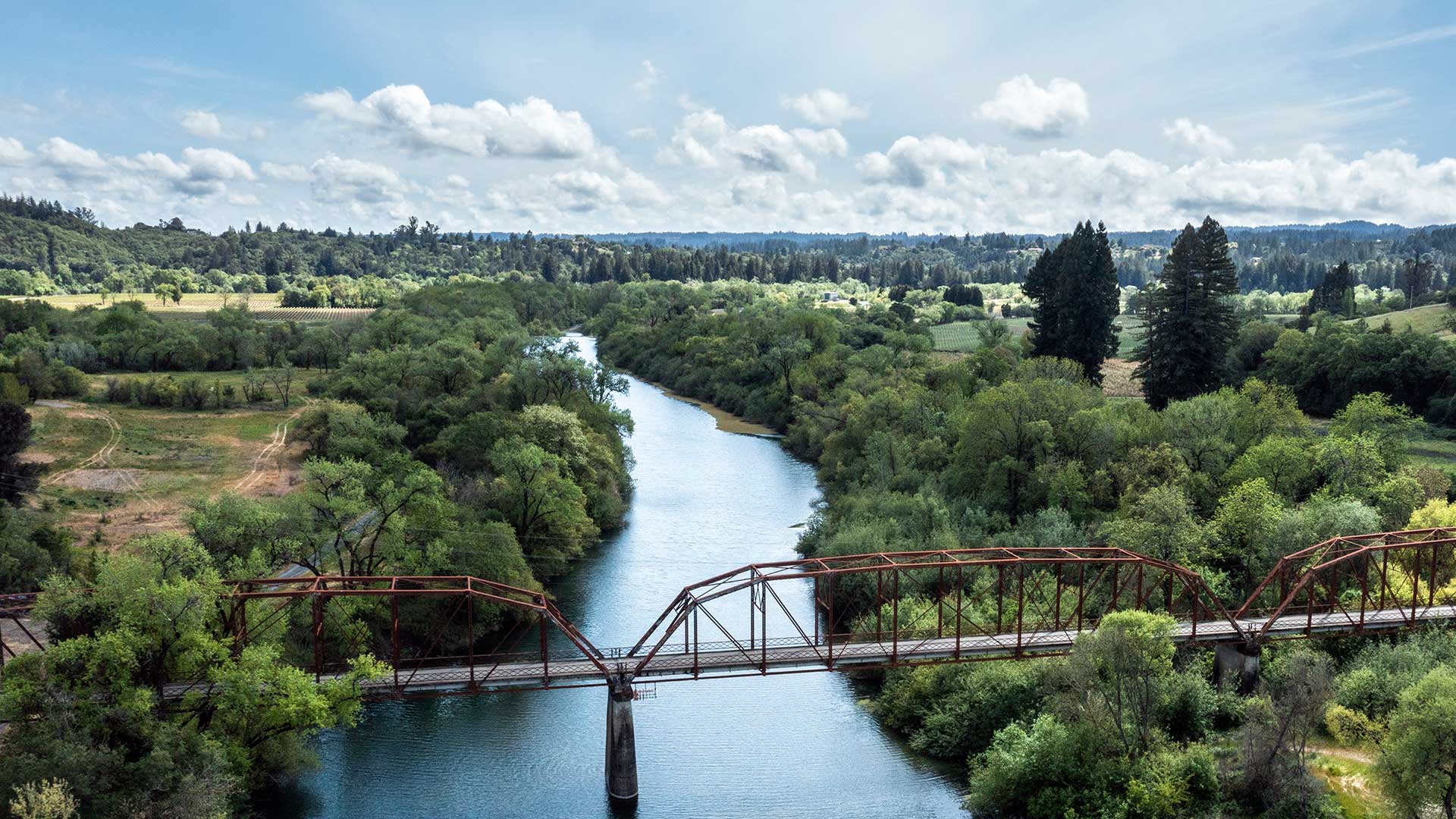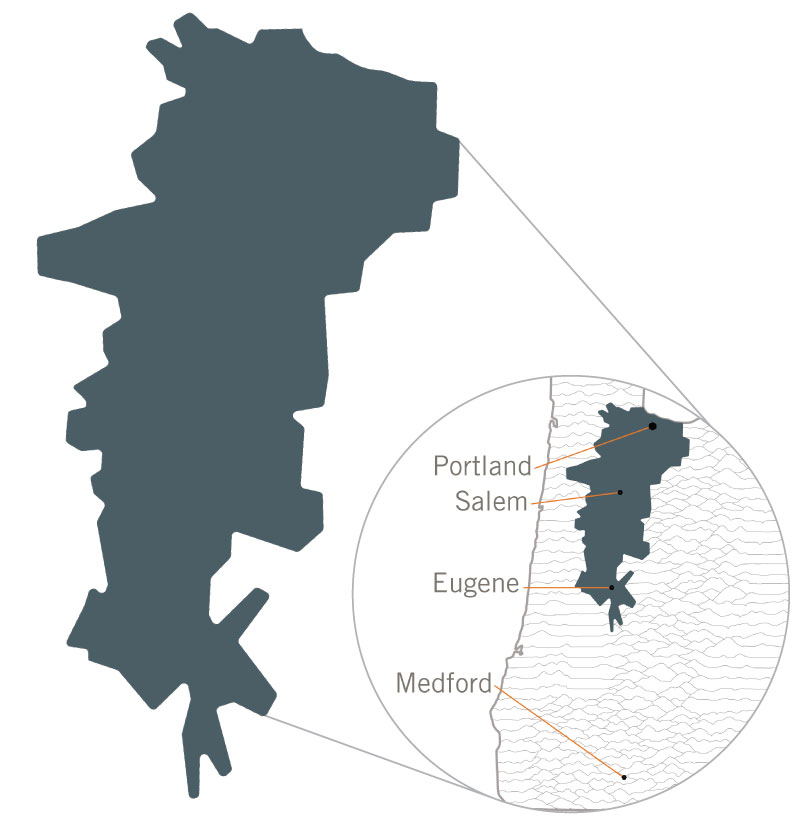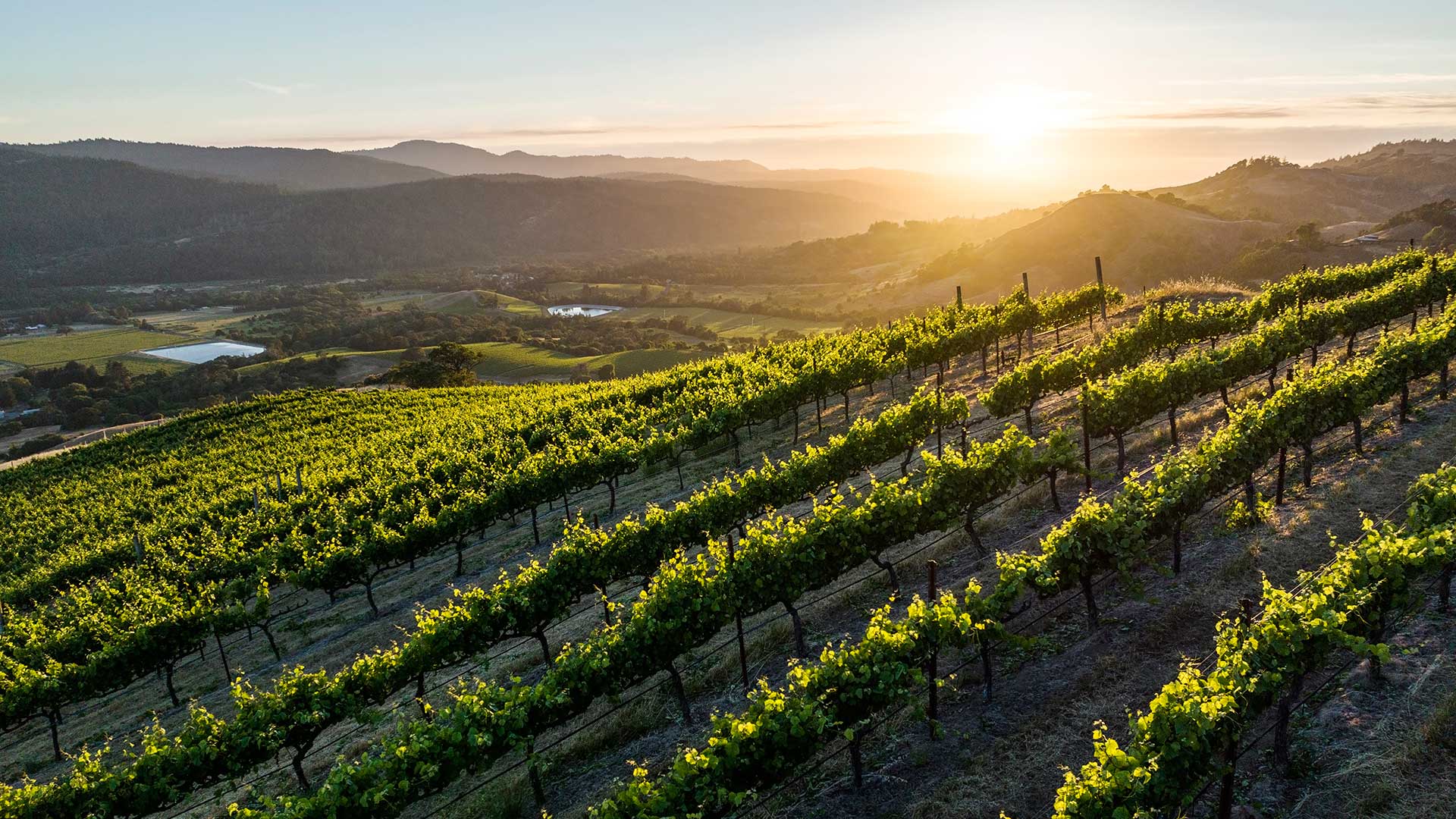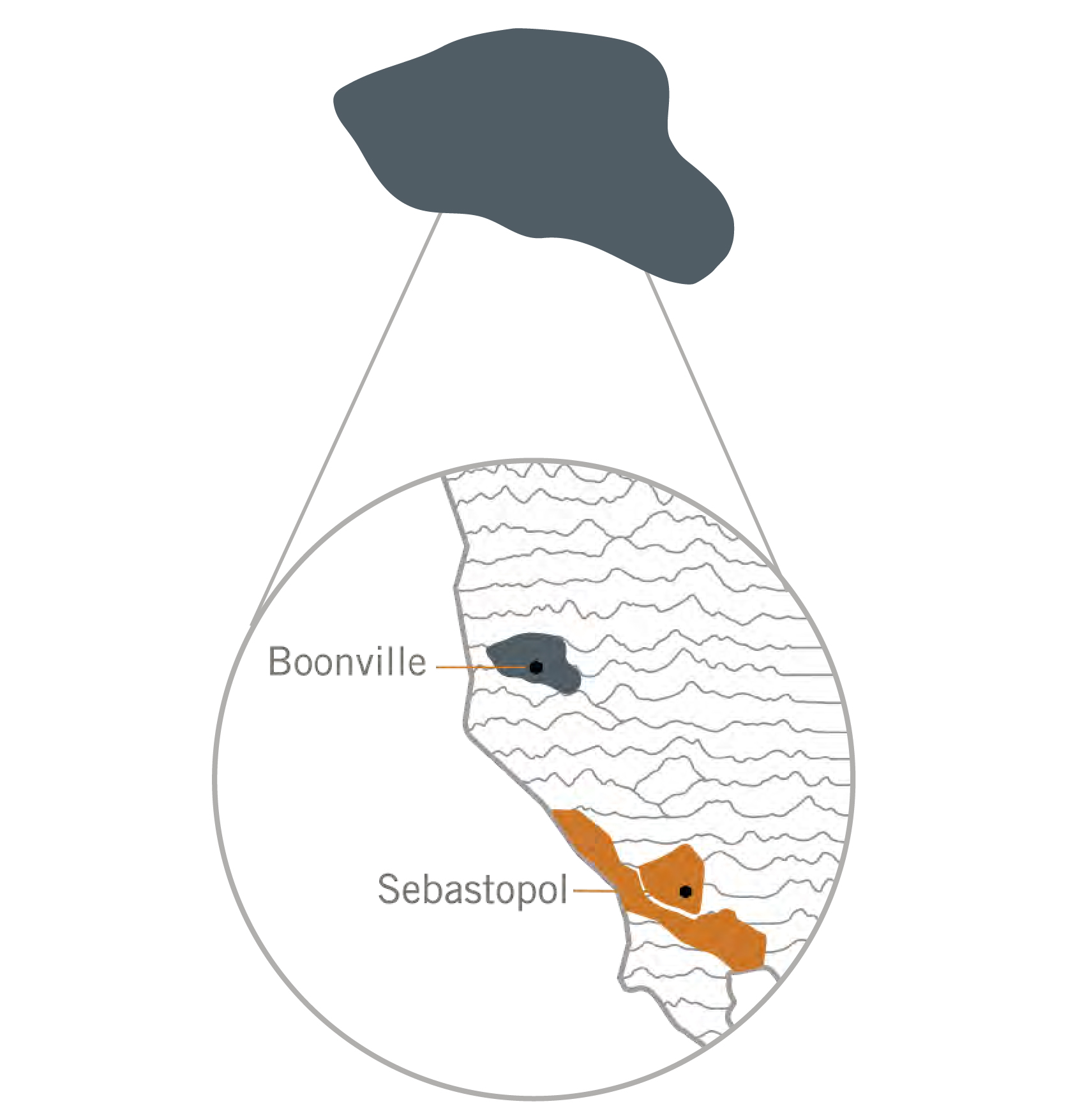A STUDY IN CERISE
A photo essay by Lindsey Ross
Farming in Anderson Valley began in the 1850’s and the first grapevines followed soon after. Our story here is a new one. Having admired Cerise vineyard for many years we were fortunate to own and farm the vineyard, starting in 2016. It is a special and incredibly beautiful property but remote and hard to share in person. One of the ways we’ve chosen to tell the story of Cerise is through other creative lenses: quite literally in this case through the mammoth plate photography of Lindsey Ross. Lindsey spent a week at the property during harvest 2016 and these are her impressions of the vineyard.
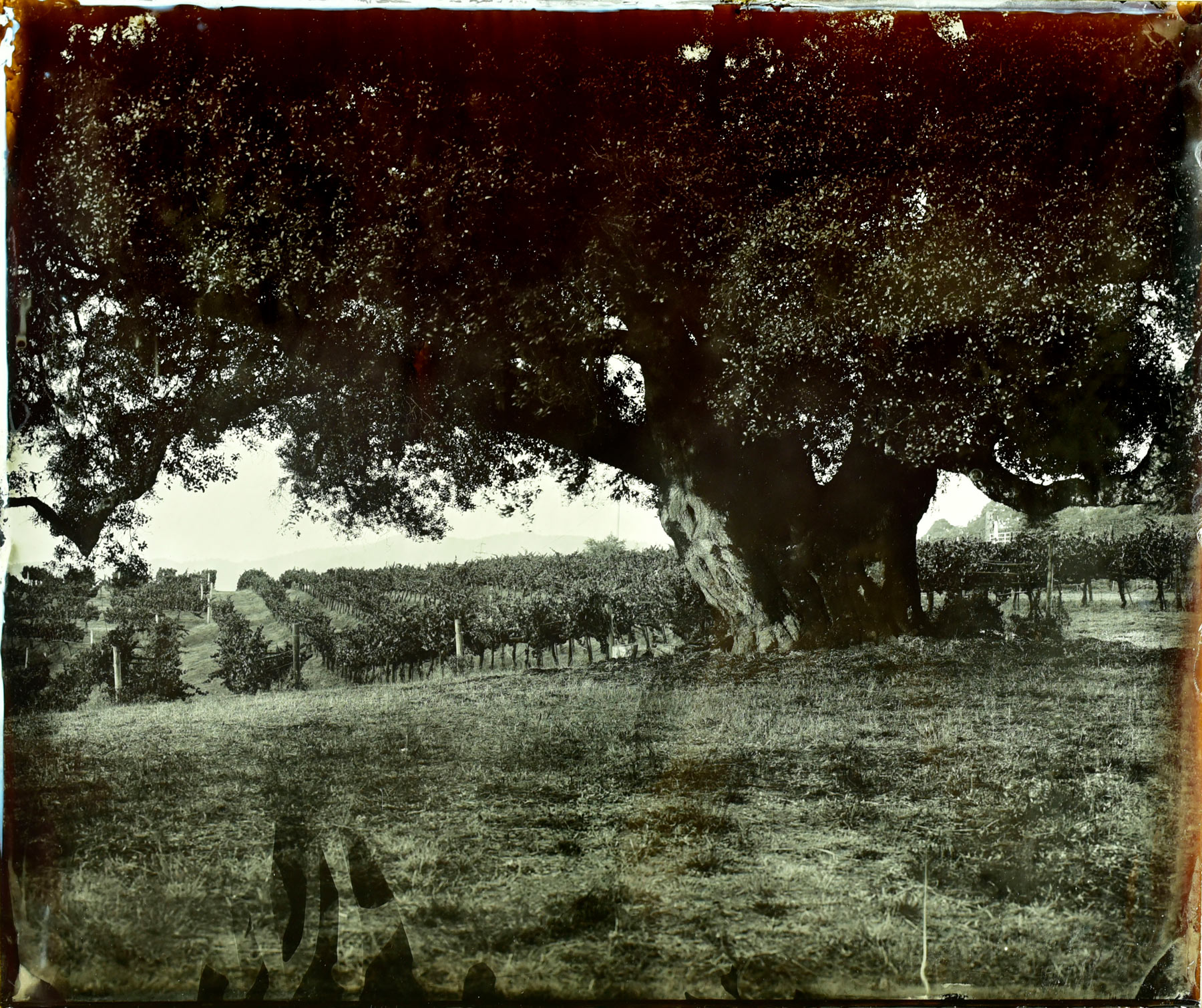
Arrival at Cerise. Oaks dominate the hillsides between vineyard blocks. The clean air creates a silvery fairy moss that hangs from tree branches and will turn an otherworldly bright green in winter. Manzanita and amorphous boulders fill dells and gullies or dot the long, golden, grass-covered slopes. There is a real sense of the wild here.
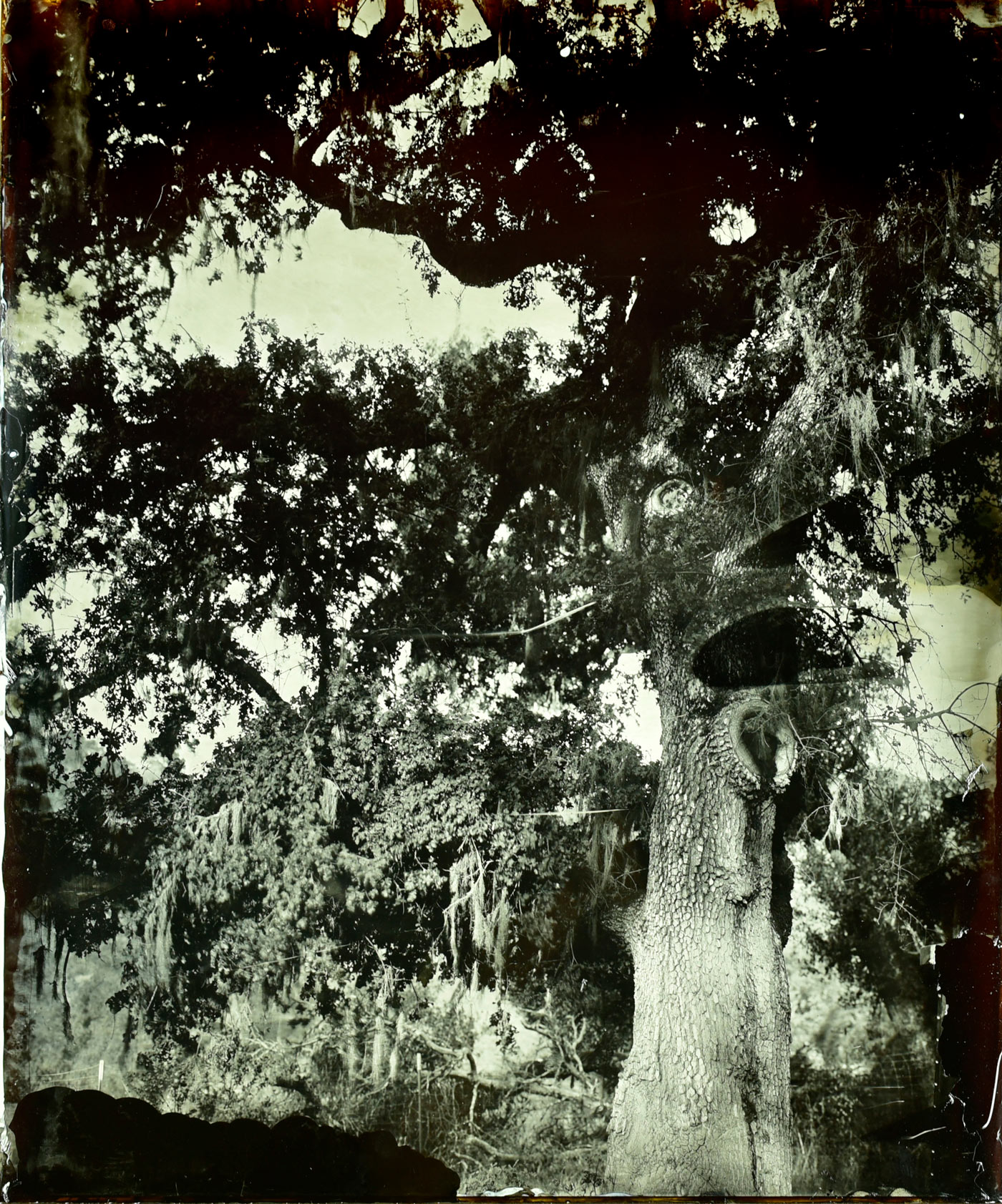
There are woodsy corridors that attracted the most beautiful light and caught my attention frequently. I dubbed them Narnia on account of their almost magical property. I heard mysterious noises coming from these places but never saw more than moving foliage and rustling grass. The quiet of Cerise makes one’s senses extra keen when it comes to unidentified sound and movement.
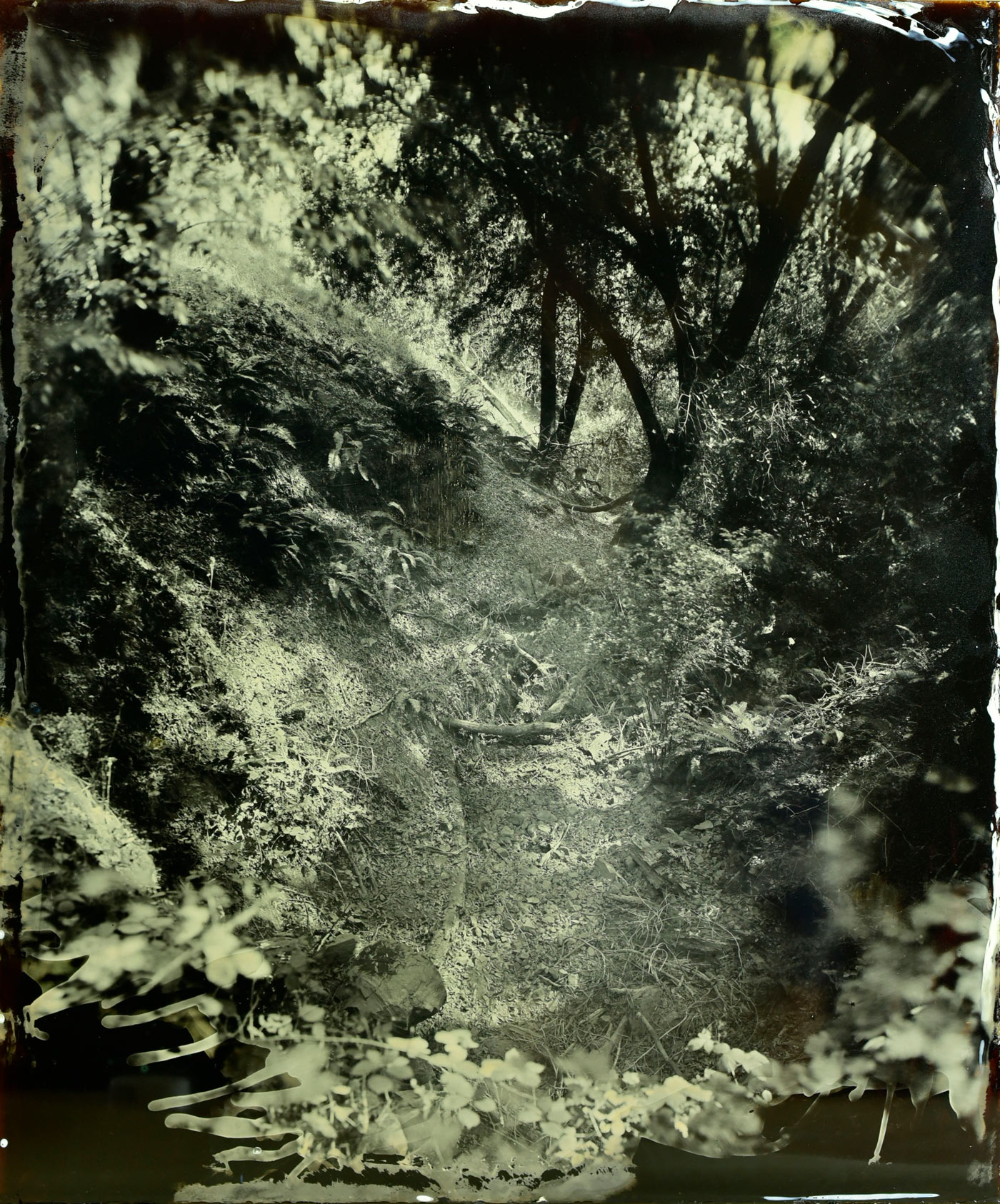
There are no animals in these landscapes, at least few you can see. The process is lengthy and not suited to capturing movement so the creatures that abound at Cerise and rule this fantastic landscape are best imagined by the viewer.
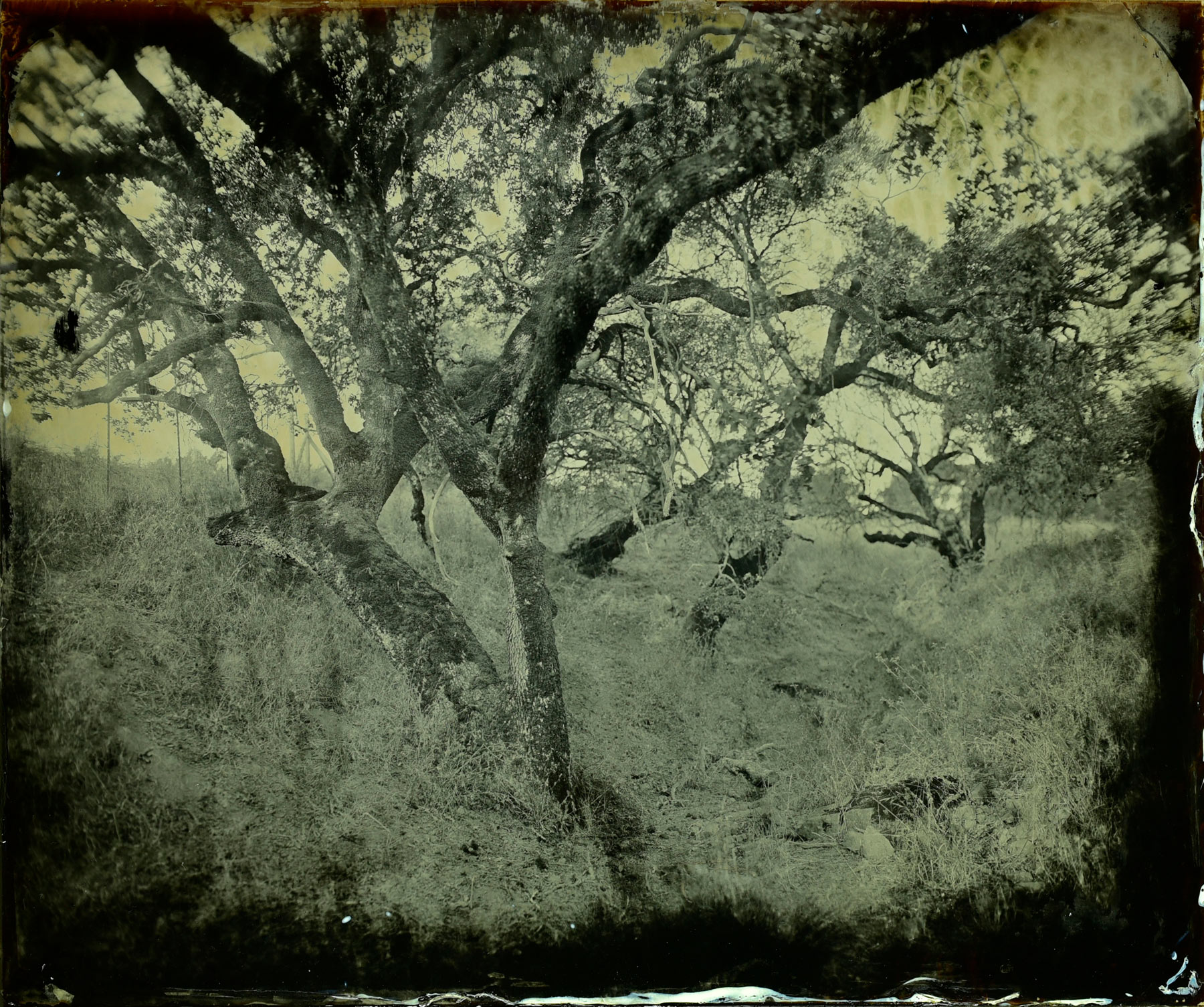
What kinds of creatures live here? Bobcat, coyote and mountain lion all left their mark. Deer, rattlesnakes, wild turkeys, owls and other birds of prey were observed almost daily, often when the sun was going down around the numerous springs throughout the vineyard.
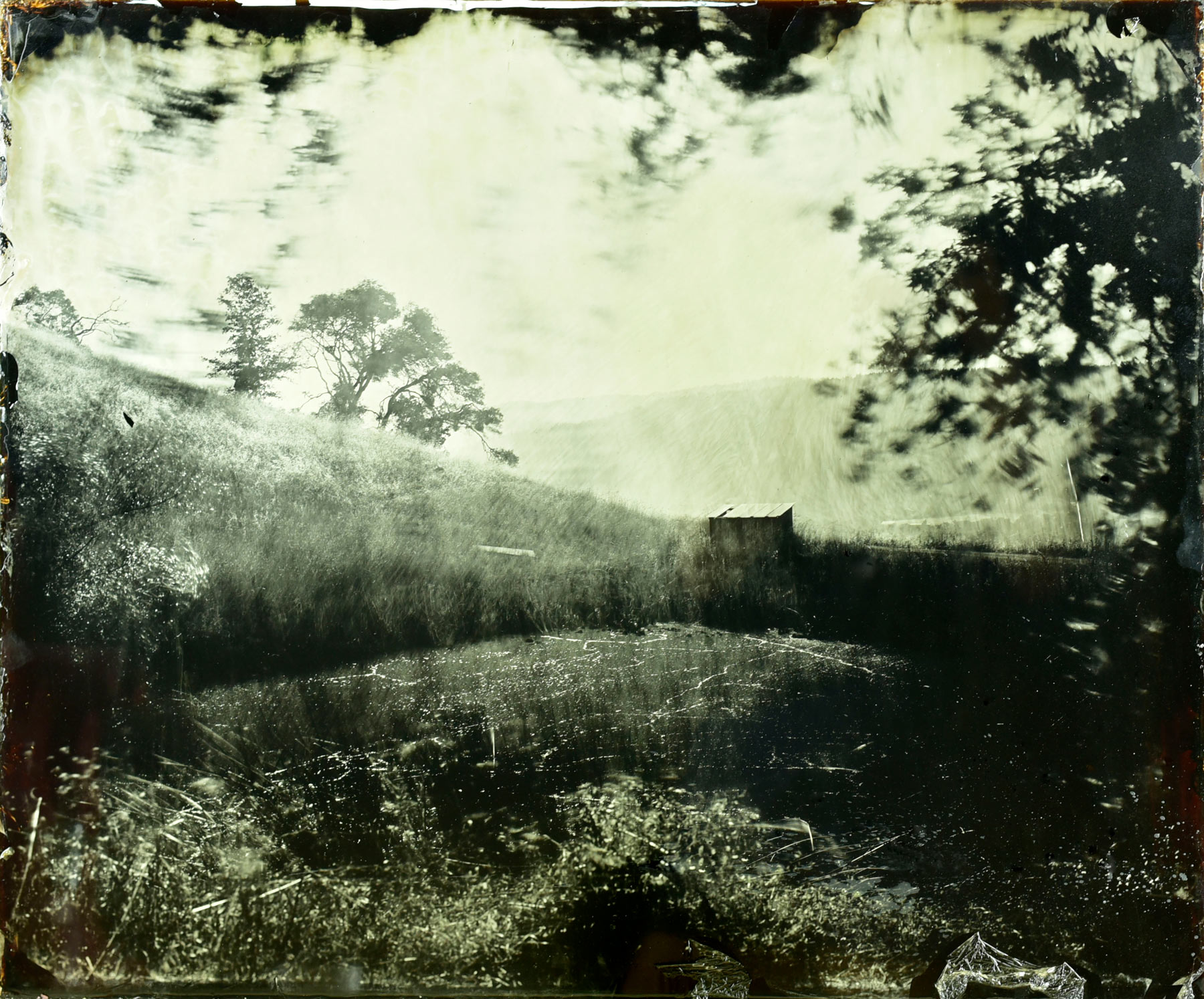
A favorite moment was a morning encounter with a mother wild pig and her litter of 15 piglets. They crossed the road in front of me but the runt lagged behind, then stood in front of my truck, snorting and protesting. Precocious and aggressive beyond his size.
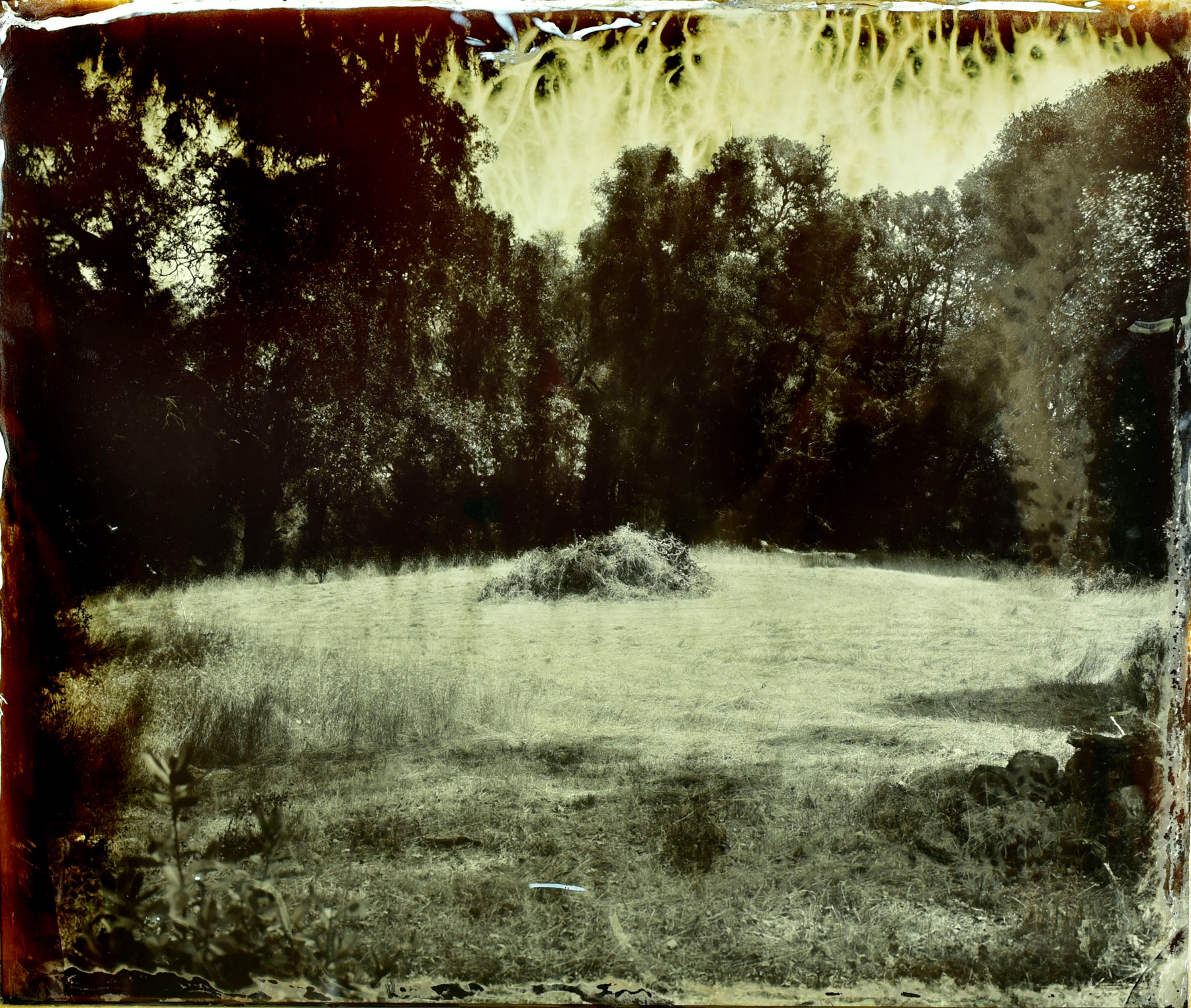
The physical nature of this work meant that it took almost a day to create each one of these plates. Measuring 20 by 24 inches and with the image resting on fragile glass, it often took many attempts to capture the right light and moment. Positioning the immense camera along bumpy roads and steep hillsides was challenging yet allowed me to actually step into the web of the property.
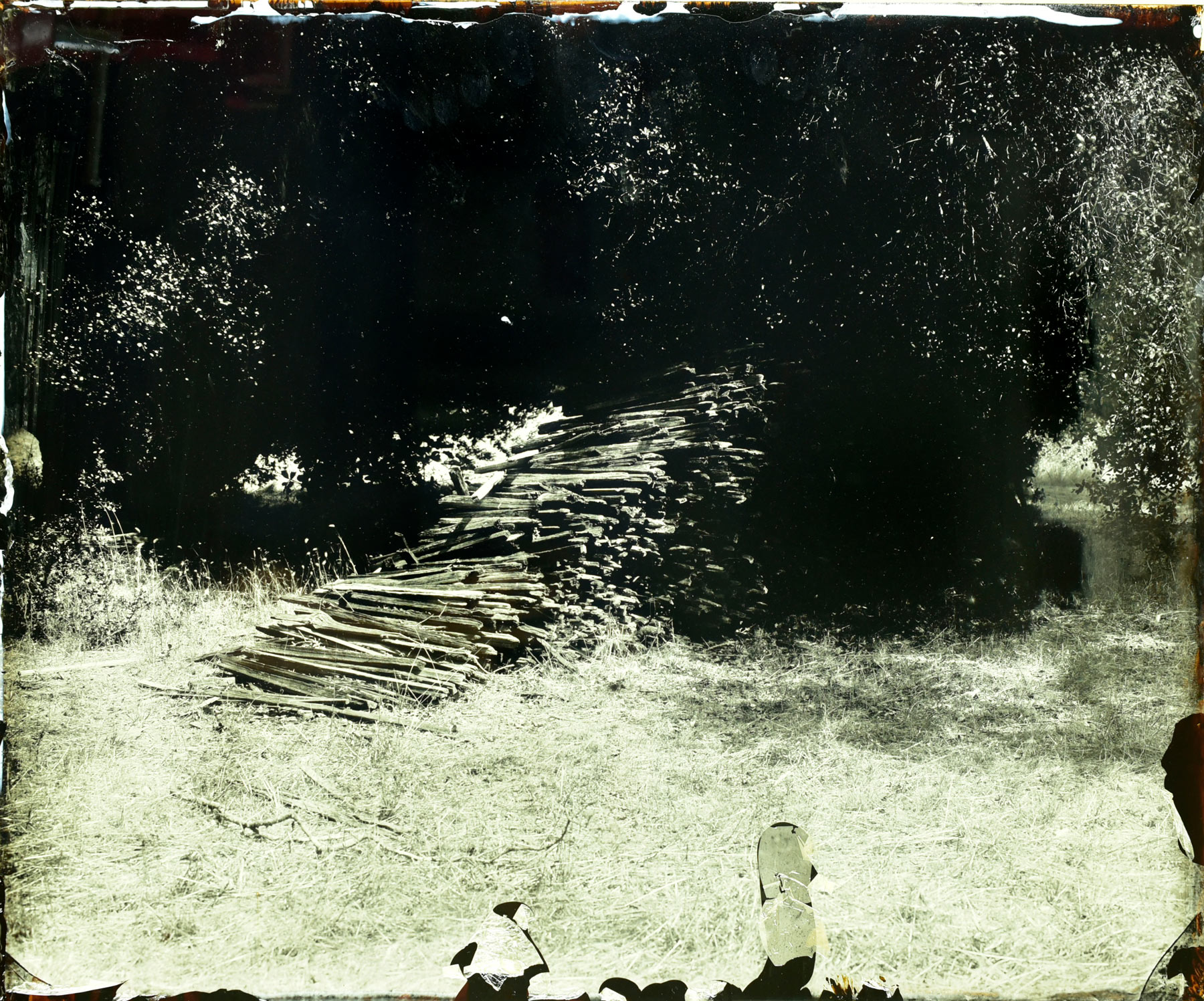
I came here expecting to be an observer. Armed with the medium of wet plate collodion photography – a process which in the 19th century set itself apart from other artistic mediums by way of its veracity and inherent ties to the physical world – I believed that I could observe my subject matter objectively. However, the slow pace of the medium and that of the vineyard formed a bond. It would sync with me and I with it.
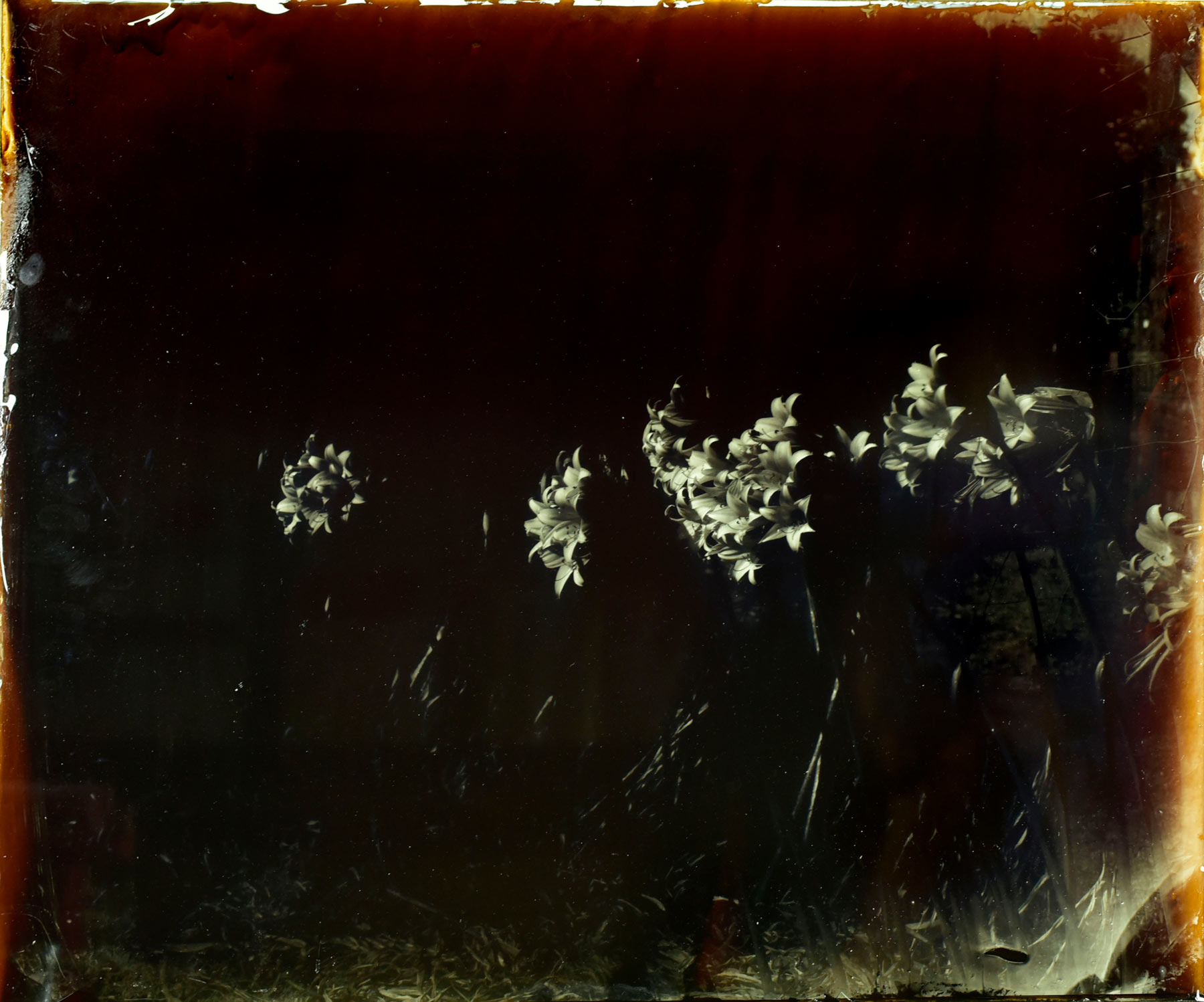
Lindsey Ross works with a mammoth plate camera. This almost civil war era camera is cumbersome – weighing 200 lbs and 5’4” in length – and requires its own darkroom to be constructed on site. This is no mean feat. Images are created directly onto 20”x24” glass plates requiring arcane knowledge of by-gone photography. Find her at lindseyrossphoto.com.
We expect to release our first wines from Cerise Vineyard with the 2016 vintage.
Available to members of our mailing list.


